What to learn from a sudden chicken death
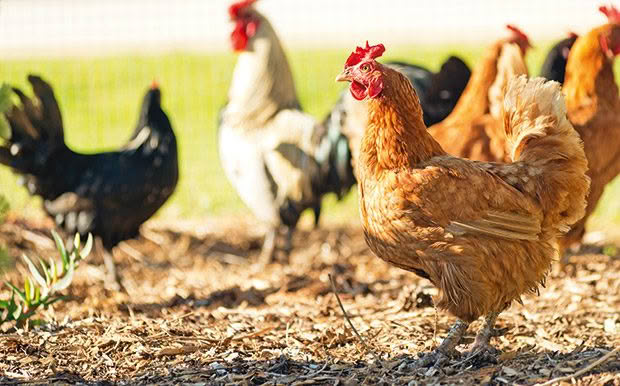
In a large flock, a sudden death rate above 2% is of great concern. But it can be far more challenging for small flock owners when one dead hen equals a 10% death rate.
Words: Sue Clarke & Nadene Hall
When 82 out of 83 chickens on a lifestyle block were found dead in their pen overnight, the Ministry for Primary Industries (MPI) launched an investigation to find the cause.
Any mass illness or deaths in your flock warrants urgent investigation. The concern in this case was that it could be a highly contagious poultry disease, perhaps one not found in NZ before, such as avian influenza or Newcastle disease.
There was one survivor within the enclosure, locked up in a cage which in hindsight turned out to be an important clue. Two of the dead chickens underwent a post-mortem at a specialist pathology lab.
“It was determined that death was through trauma by a predator (presumably a dog), with multiple puncture wounds and broken bones observed in the two dead birds examined. Avian infectious agents such as avian influenza and Newcastle disease were excluded on clinical and epidemiological evidence.” – Surveillance magazine, March 2021.
It might seem odd that a dog attack wasn’t more obvious, but signs can be very subtle. Poultry may die from smothering and/or shock, showing no signs of blood.
It can be very hard to see puncture wounds caused by teeth, and birds are often killed by violent shaking. Signs of a dog attack include:
• lots of animals dead but not eaten or showing many/any signs of injury;
• dead birds piled in a corner or up against a fence;
• very anxious survivors.
WHEN SHOULD YOU RAISE THE ALARM?
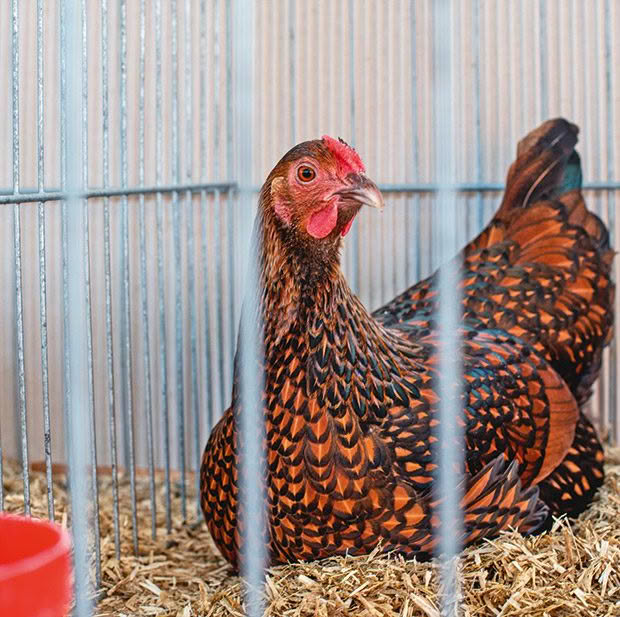
In a large flock, a sudden death rate above 2% is of great concern. However, it’s also easier to see the problem, eg in a flock of 5000, it would be 100 birds.
If you only have 10 hens, it can be more challenging to work out if you have something like an infectious disease when one dead hen equals a 10% death rate.
Poultry expert Sue Clarke says it’s important to ask yourself:
• were there any prior symptoms or did the bird just suddenly die?
• are there two or more dead?
• are other birds showing similar symptoms?
• can you eliminate all environmental causes, such as over-heating, chilling, lack of food, lack of water, predators, smothering (see page 56)?
• have you recently introduced new birds you’ve brought in from another place, eg rescue hens?
• have you taken birds to a poultry show?
• what age are/were the affected birds?
“If you have two dead birds and three showing signs of illness (in a flock of 10) – so 50% of the flock – and you can rule out some of the above, like smothering due to low temperatures or a fright, talk to your vet,” says Sue. “They usually need to see sick birds and autopsy dead ones.
If necessary, they will send a body/bodies to a lab for more detailed diagnosis, especially if an exotic disease is suspected.”
A bird’s age can be a clue to the cause. For example, Marek’s disease mainly affects growing birds, from when they’re 10 weeks old, up until the age of about 30 weeks or so (7-8 months), and a common sign is birds start limping, then become paralysed.
“I think small flock owners have to learn to live with Marek’s, and you need to expect a certain number of growing birds to die – it could be up to 25%. Some breeds are more resistant so that helps. But if you have adults over 8 or 9 months, they’re unlikely to have Marek’s if they’re lame.”
Another common mass killer is coccidiosis. “If you have chicks – say 6-10 weeks old – standing around, huddling, it’s more likely to be cocci. If they’re adults, it’s unlikely, unless they’re former battery cage hens living in a free-range environment for the first time.”
What happens when you sound the alarm?
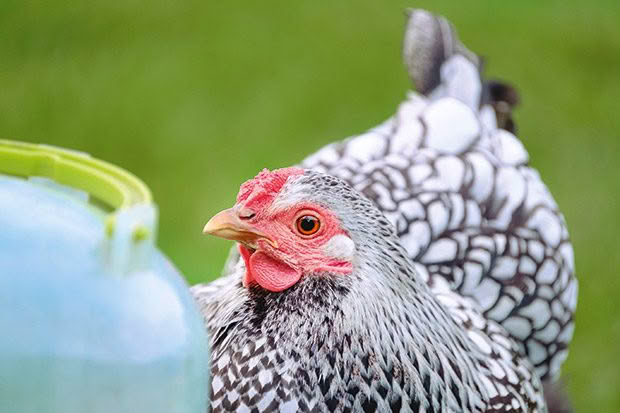
If multiple members of your flock come down with similar symptoms or die suddenly, it’s vital to get urgent help, some of which may be available at no cost.
Dr Wendy McDonald heads Diagnostic and Surveillance Services for Biosecurity New Zealand, part of MPI. She says to contact your vet if you have unusual symptoms or high death rates in any livestock.
“The veterinarian will be able to advise if this could be an exotic or emerging disease that needs reporting to MPI through the exotic pest and disease hotline (0800 809966). In many cases, the vet would contact MPI. The hotline is available 24/7 and if you’re in any doubt, you should call directly.”
They’ll ask for your contact details and a simple description of the case. All details are kept confidential.
“No technical details are required at this stage,” says Dr McDonald. “The information will ensure the case is relayed to the right MPI team (as the hotline is also used for plant and aquatic surveillance).”
An investigating veterinarian will call you back. They may ask you to send photos or video, liaise with your vet to gather more information and samples, or even visit your block in person. MPI funds tests and autopsies if it initiates an exotic disease investigation.
If a high-risk disease is suspected, such as foot-and-mouth disease in ruminants or avian influenza in poultry, you’ll be asked to:
■ remain on the property until the cause is confirmed;
■ limit or stop the movements of animals and gear on and off your property.
If exotic diseases are ruled out, MPI will usually work with you and your vet to try to determine the cause of illness.
If you don’t qualify for an investigation but still want a diagnosis, several NZ laboratories test for avian diseases. They need sick live birds to examine if possible, blood and faecal samples, and/or dead bodies.
Your vet can usually submit samples for you. The lab will need to be told what to test for (eg, antibodies for a particular virus). Some tests are costly, but it may be worth it, especially if you have a large flock and/or rare, expensive breeds.
WHAT IS SMOTHERING?
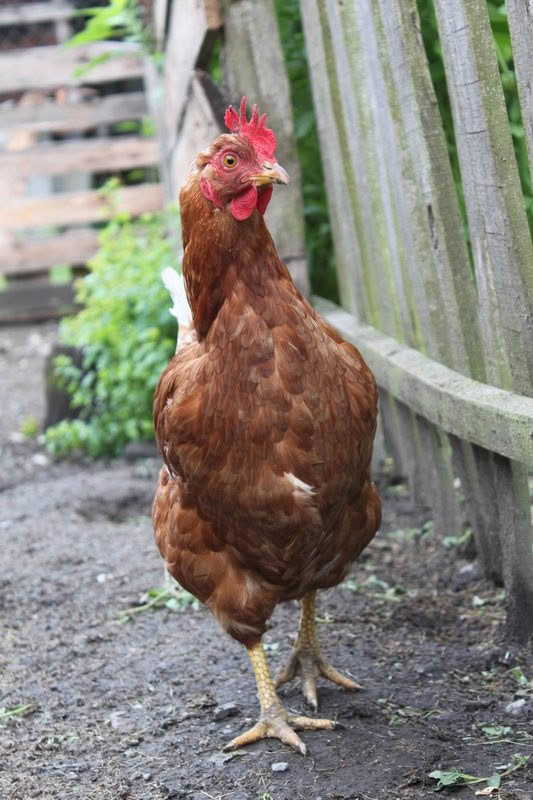
Smothering happens when birds mass together, often on top of each other, resulting in death from suffocation. It’s one of the biggest causes of death in freely housed commercial birds.
“Smothering is particularly problematic because it’s difficult to predict and even more difficult to control,” says poultry researcher Dr Ashleigh Bright. She studied smothering and possible causes on free-range commercial farms in the UK and found three general categories.
Panic smothering: can occur at any time, usually a one-off event caused by a predator, vermin, sudden noises, or changes in light, typically involved 20 birds or so.
Nest box smothering: most common when hens start laying and one hen visits/uses a nest box, stimulating other hens to crowd into the same nest box.
Creeping smothering: the most common type of event with an unknown cause. Possible triggers include timing (for example, when the temperature drops and birds naturally huddle to stay warm). Usually involves 1-10 birds, can occur at any life stage.
3 diseases NZ doesn’t have that we need to watch for
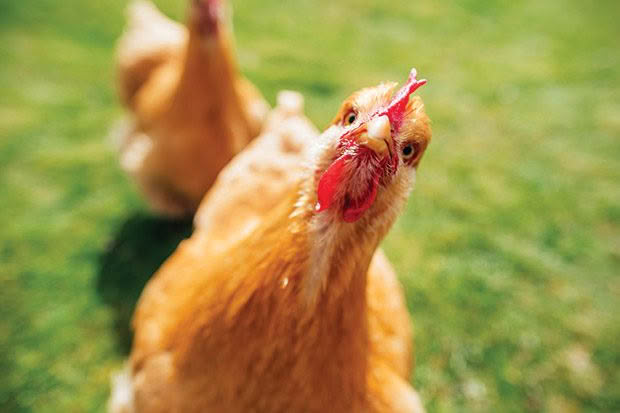
These are the three most severe diseases in the poultry world, not present (so far) in New Zealand.
A first case could easily be in a backyard flock. The impact on NZ’s unique native bird species and the commercial poultry industry would be devastating. Birds would have no immunity, and the initial outbreak could possibly result in millions of deaths.
There would be a compulsory slaughter of all birds in a wide area around an infected zone – including backyard flocks – and those of any possible contacts.
NEWCASTLE DISEASE
What is it: a highly contagious viral infection
Birds affected: many species of domestic and wild birds, most susceptible are poultry, turkeys, pigeons, and parrots.
Mortality rate: majority of a flock, within 72 hours.
Symptoms: fluffed up, lethargic, not eating much, laying odd eggs, uncoordinated movements (may fall off perches), twisted neck, head tilted, head shaking/tremors, circling, partial or total leg or wing paralysis, diarrhoea (sometimes bloody), difficulty breathing/gasping, convulsions.
AVIAN INFLUENZA
What is it: a highly contagious viral infection
Birds affected: all, domestic and wild, but particularly poultry. Many species of waterfowl, especially geese, ducks, and swans carry the virus but generally show no symptoms.
Mortality rate: up to 100% in poultry and turkeys.
Symptoms: fluffed up, depressed, little interest in eating or drinking, egg production drops, congested, sneezing, coughing, red, watery eyes, panting, difficulty breathing, head tilt, twisted neck, dark red skin with bluish tinge, diarrhoea, sudden death.
INFECTIOUS BURSAL DISEASE (IBD)
What is it: a highly contagious viral infection
Birds affected: chicks aged 3-6 weeks, white Leghorns are more susceptible than meat breeds and brown-egg layers.
Mortality rate: up to 60% in poultry
Symptoms: first sign is often watery or white diarrhoea that forms a paste around the vent, may be bloody, chicks peck at their vents, depression, no appetite, dehydration, huddling, ruffled feathers, sitting, sleeping with their beak touching the floor.
Love this story? Subscribe now!
 This article first appeared in NZ Lifestyle Block Magazine.
This article first appeared in NZ Lifestyle Block Magazine.
